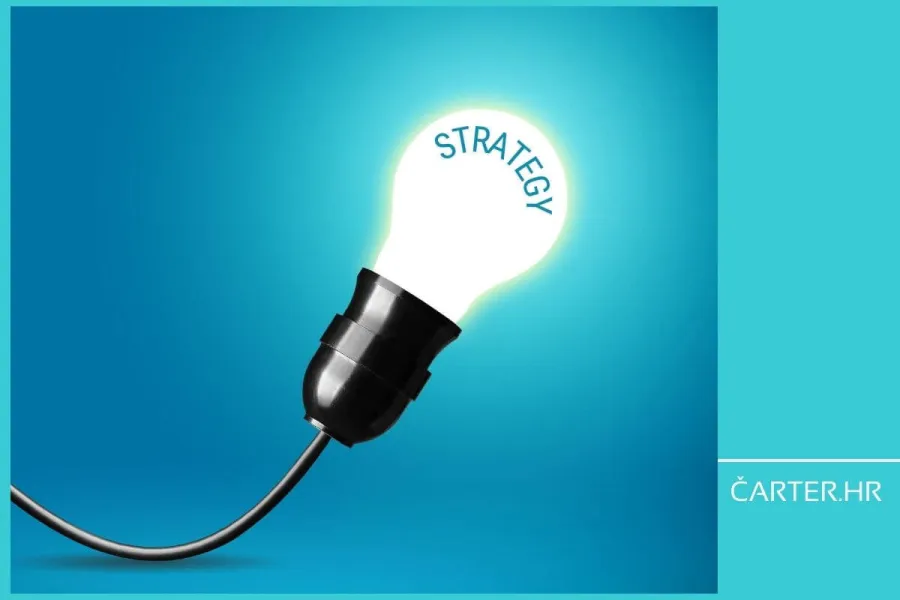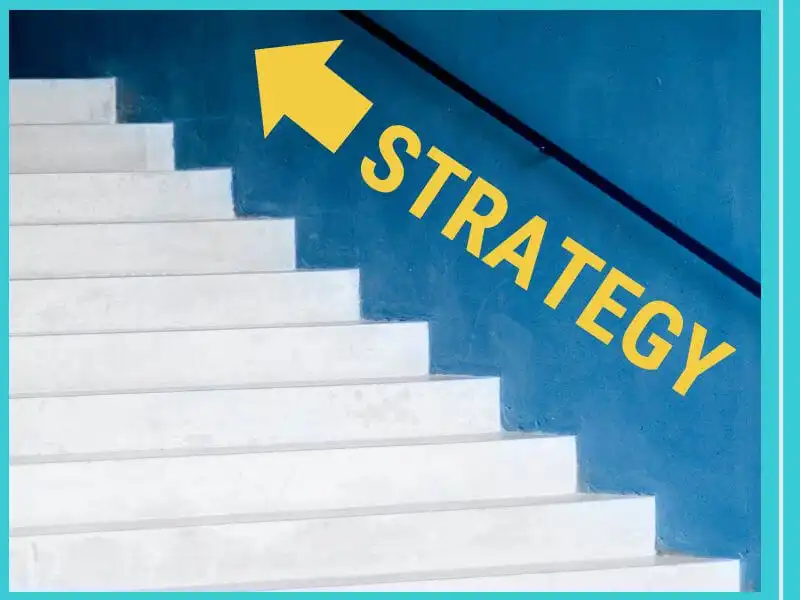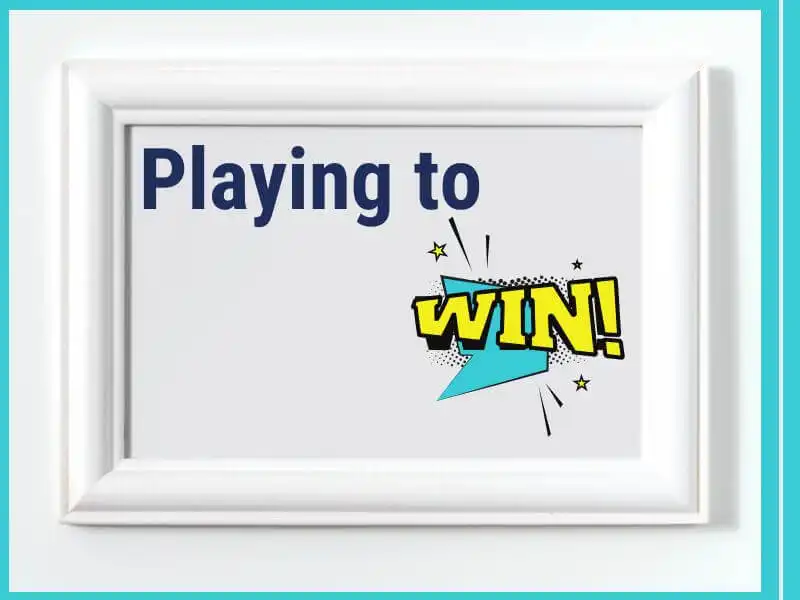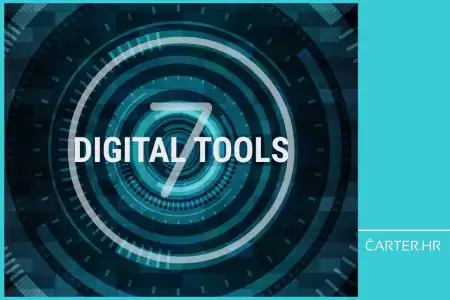
- 25.03.2025.
- News, Marketing, Management
Strategy is often misunderstood as a complex and inaccessible concept, reserved only for experts. In her new article, Andreja Fazlić explains the strategic frameworks that every CEO and leader should know to develop an effective strategy for their business. Learn how to make the best business decisions that lead to competitive advantage and success.
Strategy has been unfairly stigmatized as demanding and complex, available only to a small group of experts. However, this is not true!
The essence of strategy is, as Michael E. Porter says, choosing to do things differently from your competition! However, before I go into details, there are two elements to keep in mind that greatly influence what kind of strategy your organization has, or does not have.
The first is the culture of your company. Simply put, it represents all the behaviors you and your employees demonstrate in interactions with customers, suppliers, performing tasks, etc. If your organization does not have a developed culture, even the best strategy will struggle to help your business achieve the desired goals.
The second is the misunderstanding, or the identification of strategy with strategic planning. These are two complementary, but different things.
In the previous article, I wrote about the history and summarized Porter’s thoughts on strategy, and in this one, I present the basic differences between strategy and strategic planning, as well as the details of the “Playing to Win” framework.

Strategy vs. strategic planning
Strategy has its roots in military arenas, and there the difference between it and tactics is clear and simple. It is a long-term vision, a mental construct, a theory that leads to the achievement of a goal, while tactics are short-term and situational actions through which the strategy is implemented and defined goals are achieved. In business contexts, this difference is often blurred and misunderstood.
Roger L. Martin, one of the most globally successful business strategists and author of the proven strategic framework "Strategic choice cascade," published in the book "Playing to win," says:
"Strategy is a choice. Strategy is not a long task plan; it is a set of interconnected and strong choices that position the organization for victory."
The development of a strategy requires that you expose yourself and step out of your comfort zone, specifying outcomes that include customers who are eager enough for your products or services to buy them in quantities that will ensure you a competitive advantage and profitability.
It is a framework that answers the question "how," focused on long-term goals, covering multiple aspects of your business, and providing a clear direction for movement. Without unnecessary details. Its main purpose is, long-term and timely, to make decision-making easier for you.
In contrast to strategy, planning does not necessarily require coherence in thinking and is "easier" because it involves resources that you can control. It naturally follows once the strategy is defined, and its main purpose is the execution of that same strategy. It involves creating detailed plans and actions, and it is mostly short-term, focused on task execution.

How to develop a strategy for your business
As leaders, your greatest advantage is having developed strategic thinking. It allows you to see the big picture, recognize opportunities, and lead the business towards stable success.
Developing this ability takes time and mental space, and the basic framework of strategic thinking, or strategy development, consists of four key steps:
- Building context. In this step, you create the foundation for understanding the current state of the company and its environment. It involves analyzing internal and external factors that affect the organization, often using SWOT and/or NOISE analysis.
- Deconstruction and analysis. In this step, you break down complex problems, questions, challenges into many smaller parts to better understand and analyze them.
- Synthesis. In this step, you combine what was chosen from the previous step into a new whole, or strategy. Thus, you make decisions about what you continue with and what you leave behind.
- Planning, implementation, and revision is the step where the strategy as a mental construct is turned into action. This is the phase of strategic planning, resource and responsibility management, and continuous monitoring and adjustment. Therefore, plans need to be flexible so that you can more easily adjust along the way to achieve your goals.

Playing to win - strategy as a cascade of choices
Creating a strategy is not as complex a task as it is often thought to be, especially when there are proven frameworks that help you in its creation. One such framework is "Playing to Win - Strategic Choice Cascade" by Roger L. Martin, which is based on five key questions.
The answers to these questions will provide you with focus in action, prevent resource wastage, and connect business decisions with operational actions, resulting in long-term competitive advantage. Here’s how this framework could be applied in practice:
What is your aspiration for victory? (clear vision of success)
- Define a clear and specific goal, such as becoming the leading luxury charter operator in the Mediterranean, known for exclusivity and high-quality personalized services. The aim is to achieve a 50% market share in the next five years.
Where will you play? (targeted segments, markets, and channels)
- Define your target markets, customer profiles, and geographic regions. For example, we will focus on high-value clients from Western Europe and the USA who are seeking specific luxury vessels and services for private events or vacations.
How will you win? (competitive advantage and differentiation)
- What are your unique values, what do you offer and do differently from your competitors? Do you provide the service in a specific way, offer only certain types of vessels, organize unique sailing routes, and similar questions. Dare to be different!
What capabilities must you develop? (key competencies and resources)
- Are you aware of where you are strong and where you need to develop? Do you need to provide training to your team to equip them to deliver your differentiated service or product, or implement advanced technologies for tracking and customer satisfaction?
What management systems are needed? (processes and measurement systems to ensure performance)
- This is partially related to the previous question, and may involve introducing HubSpot CRM to track customer satisfaction and optimize marketing and sales activities. What tools do you need to achieve your goals?
Categories of trends
- News
- Sale
- Marketing
- SEO
- Web design
- Social media
- Technology
- Regulations
- Management
- Education
- Finances
- User experience
Newsletter
Sign up for the newsletter and receive the latest trends and tips straight to your inbox




